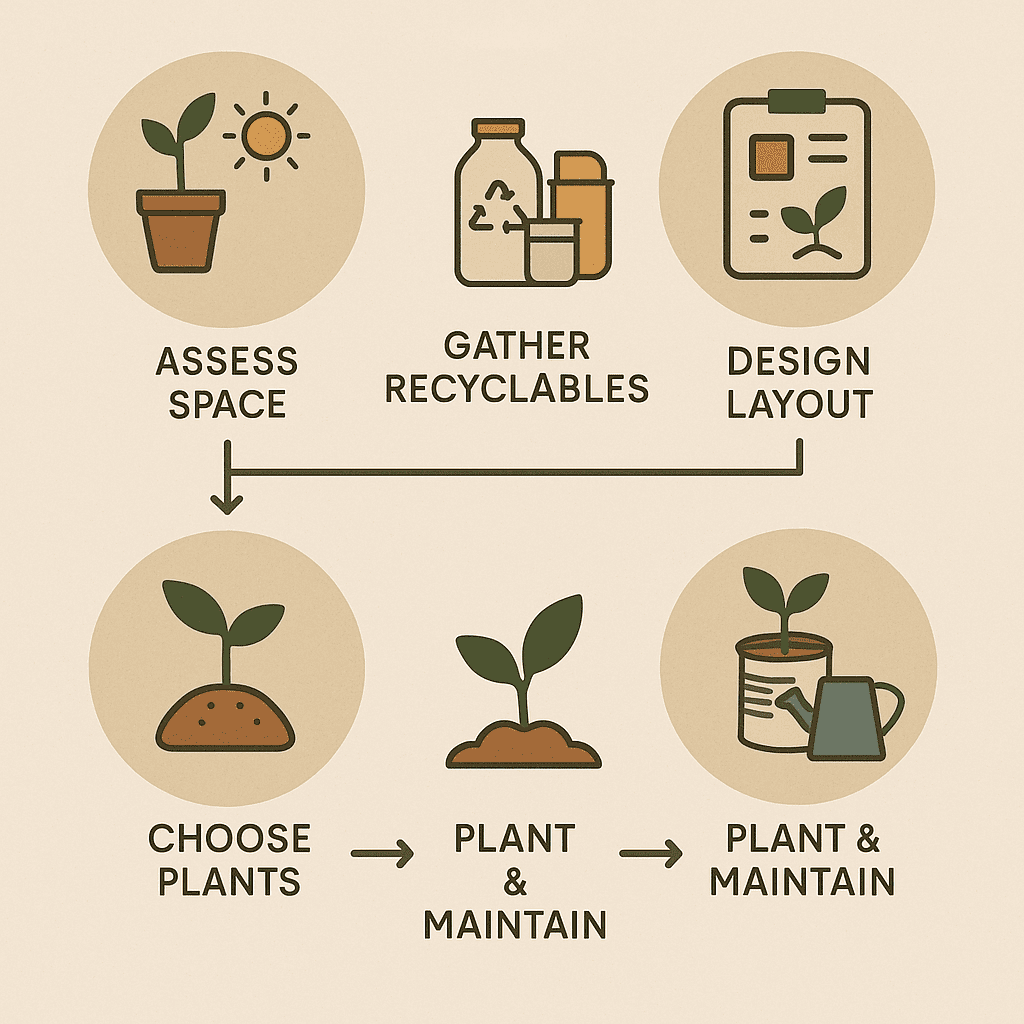Urban gardening is rapidly becoming a popular solution for those with limited space. One of the most efficient methods available is vertical gardening. Learning how to implement vertical gardening at home can help you grow fresh herbs, vegetables, or decorative plants, even in small apartments or city balconies.
What is Vertical Gardening?
Vertical gardening involves growing plants upward using structures like trellises, shelves, or wall-mounted planters. It allows gardeners to utilize vertical space rather than traditional ground plots.
Benefits of Vertical Gardening
- Saves floor space
- Enhances air circulation around plants
- Reduces pest problems
- Offers aesthetic appeal
- Increases yield per square foot
Best Plants for Vertical Gardens
Edibles:
- Cherry tomatoes
- Cucumbers
- Strawberries
- Leafy greens like lettuce and spinach
- Herbs (basil, thyme, mint)
Ornamentals:
- Pothos
- Ferns
- Philodendrons
- English ivy
- Spider plants
Types of Vertical Gardening Systems
Wall Planters
These are mounted directly onto walls and are great for small herbs and flowers.
Trellises
Support climbing plants like beans and cucumbers.
Hanging Baskets
Useful for trailing plants such as strawberries or ornamental vines.
Pallet Gardens
Repurposed wooden pallets are excellent for creating vertical beds.
Shelving Units
Tiered plant stands or shelves make it easy to organize multiple containers.
How to Set Up a Vertical Garden at Home
- Choose the location – Find a space with sufficient sunlight.
- Select your system – Pick wall planters, pallets, or shelves based on your needs.
- Gather materials – Get containers, soil, plants, and any support tools.
- Install the structure – Mount planters or arrange shelving units securely.
- Plant and maintain – Add soil, plant your selections, water regularly, and prune as needed.

Tips for Success
- Use quality potting mix and compost
- Ensure good drainage in containers
- Rotate crops seasonally
- Mulch to retain moisture
- Consider drip irrigation for efficiency
Vertical Gardening Indoors vs Outdoors
Indoor:
- Place near windows with sunlight
- Use artificial grow lights if needed
- Choose compact or shallow-rooted plants
Outdoor:
- Ensure wind protection
- Use weather-resistant containers
- Secure structures against tipping
Common Mistakes to Avoid
- Overcrowding plants
- Poor drainage
- Choosing unsuitable plants
- Ignoring sunlight requirements
Conclusion
Vertical gardening at home allows you to grow a wide variety of plants without taking up much space. With a bit of planning and creativity, you can turn any vertical surface into a lush and productive garden.
FAQ
Can I build a vertical garden without a yard? Yes. Vertical gardens are ideal for balconies, patios, or even indoor walls.
What is the easiest plant to grow vertically? Herbs like basil and mint or climbing beans are easy starters.
Do vertical gardens need special maintenance? Not necessarily. Basic care like watering, pruning, and fertilizing still applies.
Looking for a space-saving solution? This vertical gardening kit on Amazon includes stackable planters and wall-mounted containers perfect for home use.
